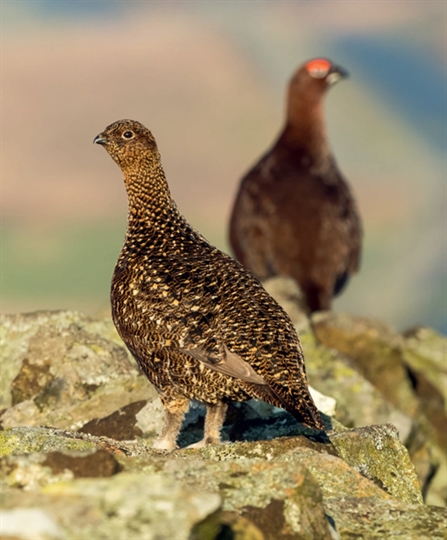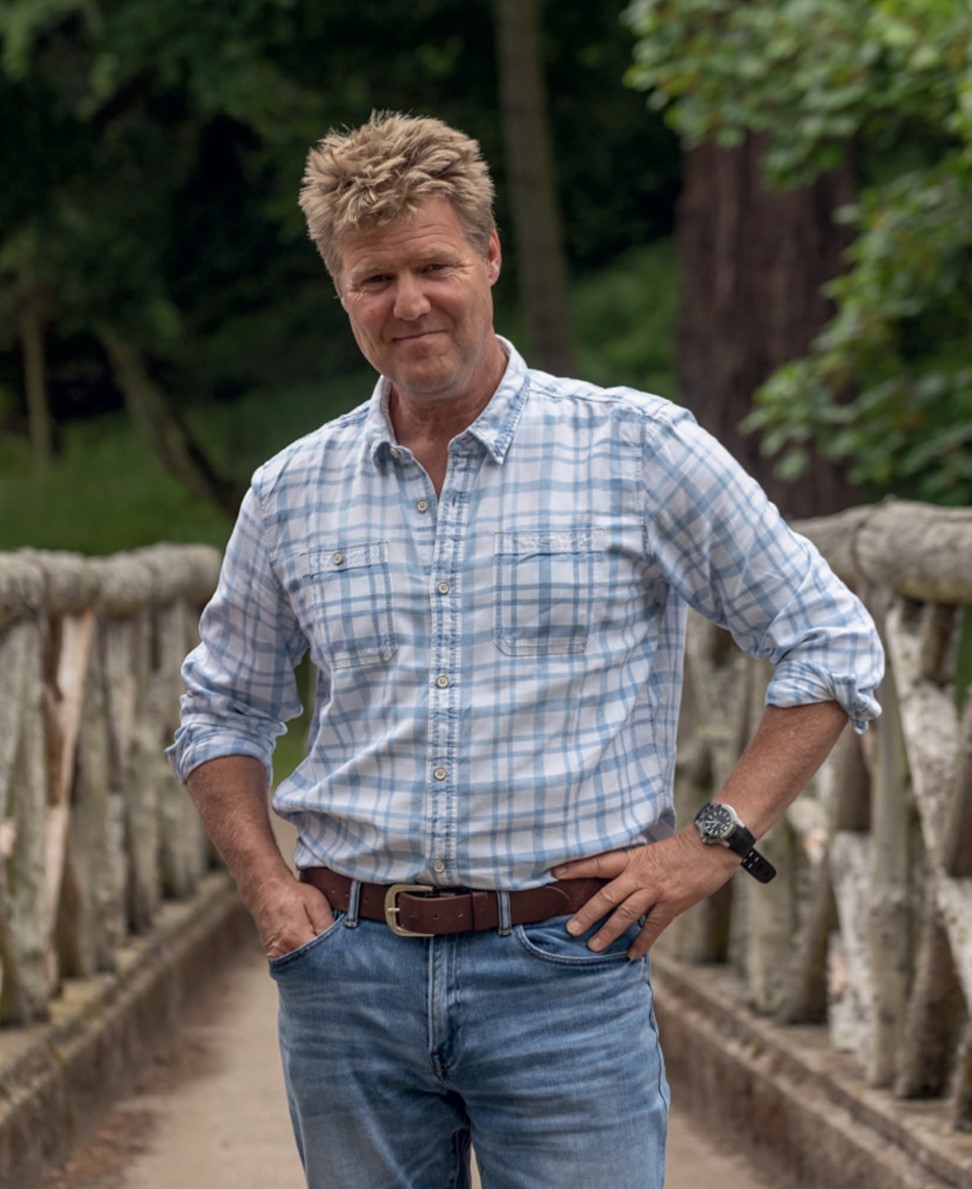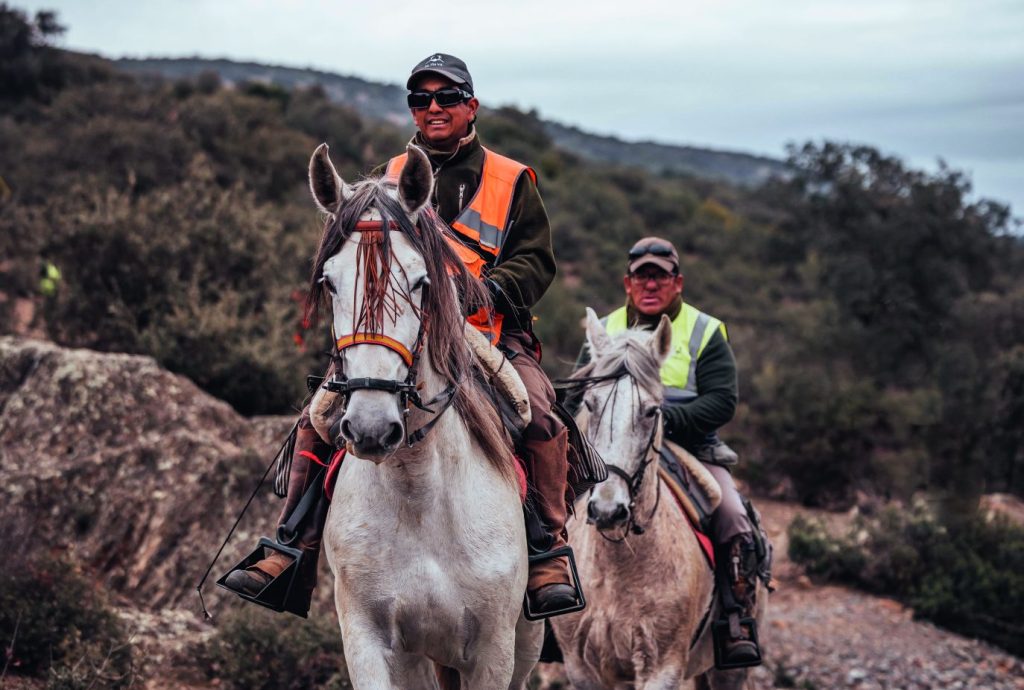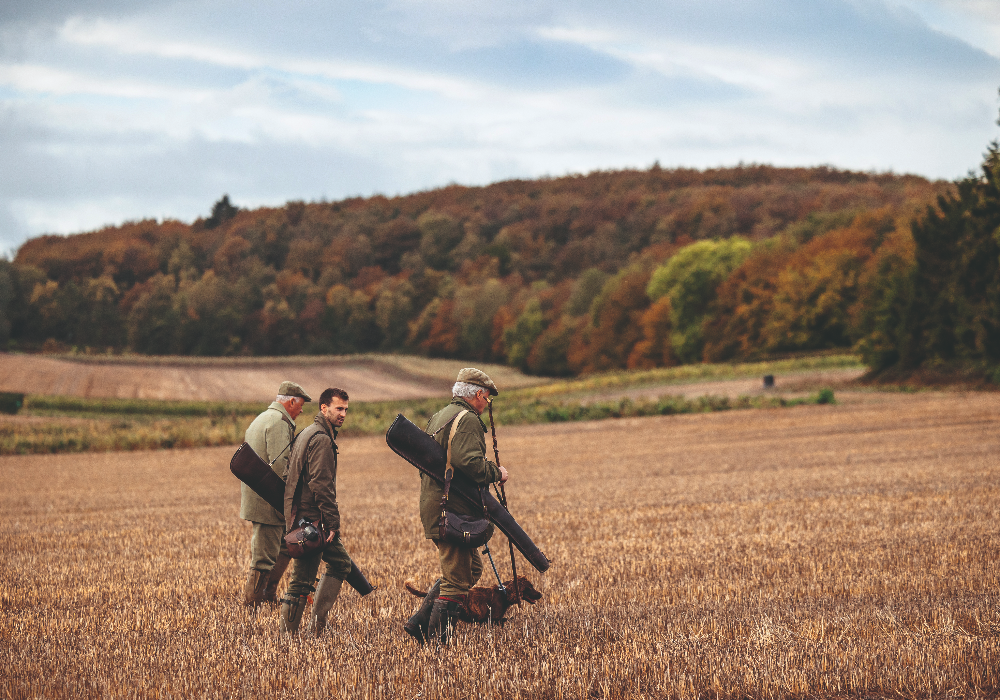PLAGUE, WAR & HOPE
“Grouse Moors support the highest and most varied biodiversity of all habitats in the UK.”

As if the pandemic of 2020/21, rumbling on and on, wasn’t enough. The beginning of this year seemed to be a new dawn, the economy ramping up, a general optimism, a deep desire for things to go ‘back to normal’, to make up for two years of uncertainty, to travel, to come together like old times on the moor, in the fields, woods and valleys, and on the riverbank. But it was not to be, with one crisis after another becoming the norm rather than the exception. Boris brought down for having a glass of wine, government in disarray, the most important issue on the planet not the conflict in Eastern Europe but whether somebody in Hackney wants to identify as a pineapple on Thursdays.
A full order book for the let days by New Year and all was set fair – and then came the lightening bolt reality check of avian influenza. The French producers who supply the greater proportion of pheasant and partridge eggs and poults for British shoots, along with domestic supply of chickens, geese, and ducks had been suffering from isolated but frequent outbreaks of the virus through 2021.
However the incidence and severity ramped up over last winter and by egg laying time in February and March almost the entire area where the birds are produced was closed down. No export, no supply. I am not sure of the stats but someone said numbers of pheasants and partridges coming into the country were 70% down. Many shoots failed to buy any stock and haven’t shot at all, taking a year out, some have closed down altogether, others have taken later birds that will not be mature until after Christmas. Some managed to source birds from Spain and Poland, and a scant few from Britain. While the cost was clearly going to increase, there was some highly questionable profiteering as prices surged from an average of around £4.50 to £5 a bird up to £10 and beyond, with orders and money being taken, then the unfortunate customer suddenly finding his deposit back in his bank and his order sold to someone else for 50% more. One extreme case saw the birds arrive from the Continent en route to one place, only for the lorries to bypass the original destination and deliver the lot to another shoot for an extra three Euros per bird! One could argue that a reduction in the amount of game released in the British Isles was needed, but this has been pretty extreme, and for some economically ruinous, not to mention the thousands of lost days beating, picking-up, shooting if you are lucky and the missing of the kindred spirits, the camaraderie, the whole colourful community coming together on shoot days up and down the country. Perhaps we will see high quality rearing back in the UK again, meeting local requirements and avoiding, excuse the pun, having all our oeufs dans la corbeille française.
The effect of avian influenza on wild bird populations has been most noticeable around the coast, and especially during the summer breeding season amongst the huge concentrations of sea birds on cliffs, islands and sand bars. On Coquet Island, barely four acres in size, there were an estimated 80,000 birds breeding in June. The island holds the UK’s only colony of rare roseate terns, along with common terns, little terns, and Arctic terns. Many adults perished, and not one chick survived.
My son Tom watched black headed gulls literally falling dead off their cliff ledge at the mouth of a little river in Caithness. Some species seem to be worse affected than others – gannets and skuas for example, but geese, ducks, swans, shags and sea gulls seem susceptible. While domestic poultry and pheasants in high concentrations go down like nine pins, red-legged partridges seem fine.
Whether grouse are immune remains to be seen. As a rule it hits hardest where birds are highly concentrated, and where there is a high incidence of exposure to more transient species such as gulls coming inland, or ducks from the coast, and mortality rates between 60 and 100% for the high pathogen variant and up to 30% for the low pathogen variant.
Just to really put a fox in the chicken run, Russia goes and invades Ukraine on 24 February for Putin’s “special military operation” claiming justification for any number of reasons from de-weaponizing its neighbour, genocide of Russian speaking people in the Donbas region, preventing the “Nazi” regime in Ukraine from joining NATO, blaming the USA, the UK, and any other reason that springs to mind on the day. The desperate situation has seen over 100,000 people killed already: soldiers, civilians, children. Hospitals and schools bombed, the nation’s critical infrastructure crippled time and time again. And for what? Putin has achieved perhaps what he really wanted, indirectly, and that is to rock the world economy to hide his own failings at home, to ramp up inflation, to cause greater inequality, mass migration, starvation across Africa, fire up the cost of living in the developed world, create mass discontent, the whole of the UK public services on strike as I write. Is this what he has dreamed of for many years, isolated from reality in his bunker, or is it nostalgia for the old Soviet empire? Whatever the outcome it will have come at a terrible cost to Russia itself. At this awful cost to humanity, though of little comfort to the poor Ukrainian people, nor the wretched mothers of Russia’s dead soldiers, one silver lining for the world just might, through the need to reduce reliance on (Russia’s) hydrocarbons, be a faster acceleration to renewable energy, and to the development of a green economy, a step towards saving the planet.
On a more comfortable note, and closer to home, the one little candle flame in an altogether dark period was how the spring and early summer in the UK this year was just how it should be, with warmth, sun, showers, insects and habitat growth and especially for grouse up on the moors. Many English moors had a good building year and where there was a decent stock, some had a really good season. We could have done without the extreme drought and high temperatures of July and August which depleted coveys significantly the further north you went. After the drought of 2018 that upset insect hatch timings for the next three years, then the cold spring of 2021 and the drought soon after, last year there was literally a famine in the hills, with the young heather greening up too late to nourish young grouse and insect production still suffering from three years before. But this year seems to have brought nature back in sync and with a fair wind 2023 could see grouse in good or even significant numbers.
It is interesting to see how the hot and controversial topics of the last few years are playing out. The latest research into heather burning and the hysterical calls to ban it altogether, implemented over a 10-year period, suggests that traditional muirburn, carried out in good cool conditions has the greatest net environmental benefit for carbon sequestration, for varied habitat to support the greatest biodiversity from birds to insects and flora. The worst outcome is to do nothing, as in many rewilding projects, the result being increased wild fire risk, increased transpiration, decrease of peat forming moss species and moisture, decreased carbon sequestration and decreased habitat value. Cutting sits in the middle – good biodiversity, but increased methane from trash decomposition in the early period after cutting. The basis for calls to ban grouse shooting because the moors are “burnt to a cinder, supporting nothing but thousands of grouse for toffs to blast out of the sky, where all predators are persecuted to extinction” could not be further from reality. Grouse moors support the highest and most varied biodiversity of all habitats in the UK, hen harriers are thriving, as are curlews, green and golden plover, merlin, pippets and skylarks and a great many other species that are more or less lost across the uplands of Britain where there is no grouse interest, and where the associated and privately funded management and protection occurs. What is more they support a thriving rural community and, as all moorland is classed as open access, are accessible for all to enjoy.
On a poisitive note, game meat is slowly increasing in popularity due to the tireless work of British Game Assurance, BASC, the Country Food Trust and others. Restaurants specialising in game, game as part of NHS catering, and game is now taken up by the Ministry of Defence for military personnel. The debate on non-toxic shot is ramping up as the end of the voluntary period to find alternatives comes into view. It is a really difficult nut to crack as the metals table is what it is, and alchemy is in short supply. There is no evidence to suggest that lead shot is toxic in its inert form and as far as I know no human has ever died from eating game shot with lead. The lethality of the steel pellet’s striking energy and lack of deformation is however far less effective at clean kills than lead, and if this leads to increased wounding or damaging of game unnecessarily then this is unacceptable. I might not be the best shot in the country but two pigeons in the bag from a box of 25 steel shells was somewhat disheartening. Bismuth cartridges seemed to work in a similar fashion to lead, at least the feel was similar to firing normal cartridges, but not at distance. Perhaps the old Purdeys will have to be scrapped and something akin to a Barrett .50 cal that can launch a saucepan full of ball bearings might put some meat on the table. I am told that Superior steel can do the business but you have to have a massive cannon to use them as the kick is significantly harsh. Nothing wrong with shouldering an auto in the field mind, that would absorb the recoil when recycling the gas to push another shell into the chamber, but a Beirut stlyi nine-shot unload might raise a few eyebrows! The cartridge manufacturers are hard at it to find the alternative, but if lead is in fact phased out then shooting as we know it will change significantly.
What to make of it all? Who knows what the future holds for country sports? While Rishi is PM at least he has a solid knowledge of the benefits of grouse moor management through his Richmond constituency but at the moment it looks like Captain Crasherooni Snoozefest might sweep into power at the next election. No doubt the enemy will be grooming hard in the shadowy corridors of New Labour, courting alliances like Queen Nicola and the Greens, clinging to power with the vote of extremist views and personal agendas. We, as a countryside community, need to step up further, faster, more intelligently and win over a largely urban and potentially hostile future government not by forcing people to change their mind, but by demonstrating how tradition, balance, experience and a willingness to adapt has safeguarded our nation’s countryside and rural heritage and achieves far more than simply obliterating the lives, the intricate and fragile economies, the values of the rural communities by carving it up as a day trip playground. This country is based on freedom, not control, and unless the great grandchild of Stalin sweeps into power, this is how it must always be.
Related Articles
Get the latest news delivered direct to your door
Subscribe to Fieldsports Journal
Elevate your experience in the field with a subscription to Fieldsports Journal, the premium publication for passionate country sports enthusiasts. This bi-monthly journal delivers unparalleled coverage of game shooting, fishing and big game across the UK and beyond.
Each issue offers a stunning collection of in-depth features, expert opinions and world-class photography, all presented in a timeless yet contemporary design.
Save 10% on shop price when you subscribe, with a choice of packages that work for you. Choose from Print & Digital or Digital only with each journal delivered directly to your door or via the app every other month, plus access to past issues with the digital back issue library.








